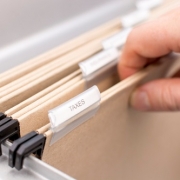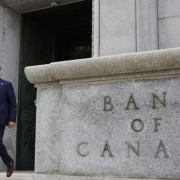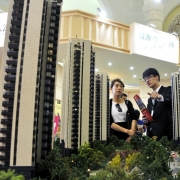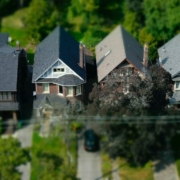Back in 2015, Toronto’s biggest issue was traffic congestion. Or, at least, that was how it seemed at City Hall, when city council approved a $919-million project to reconstruct one section of the Gardiner Expressway.
Much has changed since then. Toronto is bigger, richer and more unequal. Housing affordability is the biggest issue in local politics. And, of course, the COVID-19 pandemic has tested the city’s social fabric and its fiscal health.
Now Toronto can address all those issues with one move: combining the eastern end of the Gardiner Expressway with Lake Shore Boulevard. This would open up more than five acres of land for a new neighbourhood, which could generate $500-million in land sales and development charges. It’s enough to build hundreds of units of affordable housing.
The city’s 2021 budget process is under way right now, and the contracts for the last leg of the Gardiner Expressway reconstruction at the intersection of the Don Valley Parkway will likely be awarded this year. This is the moment to change lanes.
Why? Because bringing this piece of the expressway down to the ground, merging it with the Lake Shore Boulevard underneath for just 800 metres, would have huge financial implications.
The city almost took that route back in 2015. City staff implied it would be better to pursue this “boulevard” option, which was significantly cheaper to construct and maintain. The difference was estimated at $458-million over the life of the roadway. Yet in a 24-21 vote, council chose to rebuild this piece of the Gardiner in a so-called “hybrid” option.
Impact of Gardiner Expressway realignment alternatives
Between 2015 and 2018, the city of Toronto approved a plan to rebuild a portion of the Gardiner Expressway. The approved scheme would develop approximately 7.5 acres of land in the area. The previously considered boulevard scheme, to merge this section of the expressway with Lakeshore boulevard, creates 12.9 acres in total; shifting to that plan now could generate an extra $500-million in city revenues.
It was a murky debate. Opponents of the boulevard overstated its effects on traffic. Highway drivers would briefly share an eight-lane road, punctuated by three stoplights, before merging back onto an expressway. City studies estimated three-minute delays in rush hour, affecting a small number of people. Only about 3 per cent of commuters into downtown Toronto use the Gardiner East. Effects on freight were also exaggerated, and these could be solved with a truck-only lane during rush hour.
On the other hand: There’s a downtown neighbourhood at stake. The Gardiner East zone will soon be prime land, surrounded by parks and the renaturalized Don River.
The hybrid plan was altered and approved in 2018. Part of it is now under construction. And some land that could have been developed is now off the table. But east of Cherry Street there is still some possibility for change. The current version, a city spokesperson confirmed this week, opens up 7.5 acres near the Don River, versus 12.9 acres in the boulevard option.
That extra acreage is now worth roughly $450-million, according to Jeremiah Shamess, a vice-president at Colliers Canada who specializes in development land. He analyzed its value this week at my request. He estimates the whole 12.9 acres, in 11 blocks, could be worth $1.229-billion over the next dozen years, if sold gradually.
The larger figure is five times as much as the city estimated in 2015, thanks to a combination of land values – which have doubled – and higher densities.
There’s more. If developed privately, this new neighbourhood would generate development charges and fees: at least $75-million for the additional 5.4 acres alone. Plus, of course, property tax revenues in the tens of millions annually.
Mr. Shamess’s analysis is based on a new design by architecture firm Smart Density. It imagines 6.5 million square feet of buildings in this area, with 8,000 homes housing 15,000 people and a mix of other uses. “We looked at the potential of the area from the perspective of creating great urban design while working within Toronto’s planning policies,” said Naama Blonder, an architect and partner at Smart Density.
Their scheme lines the waterfront with a public promenade and mid-rise buildings. There’s a generous public park and a 115,000-square-foot public building that would house a school, library and community centre. The new Lake Shore Boulevard would be lined with broad sidewalks.
Even with all that, there is room to add 15 towers ranging from 32 to 53 storeys. That’s comparable to private development in the area.
This proposal is speculative, and there are question marks. The highway design would need to be re-examined. And the city might choose not to build so much.
But it should. Toronto’s official plan now calls for more than 200,000 people to move into the downtown core by 2041. The Gardiner East is about three kilometres from King and Bay. It’s next door to a new office district, East Harbour, proposed with 50,000 jobs. It is close to the Quayside site that Sidewalk Labs wanted to develop. A new LRT is planned for the area; so is the proposed Ontario Line subway.
Just to the southeast, a $1.2-billion project to remake the Don River is well under way. A new set of excellent parks spanning 200 acres – half as large as High Park – will begin opening in 2024.
So this is a fine place to plan a postpandemic urban neighbourhood. Green but dense. Served by transit and light on cars. Home to 15,000 and, if the city chooses, thousands of them in permanently affordable housing. These are the things you can build in a rich and growing city, the sort of things on which leaders hang their legacy.
Or we could put that expressway back up, and spin our wheels.








 Maziar Moini, Broker of Record - Home Leader Realty Inc.
300 Richmond St. W., #300, Toronto, ON M5V-1X2
Maziar Moini, Broker of Record - Home Leader Realty Inc.
300 Richmond St. W., #300, Toronto, ON M5V-1X2


